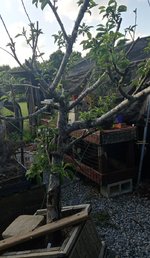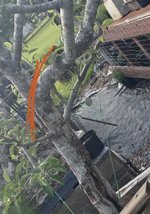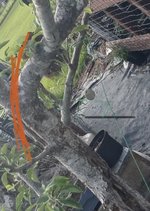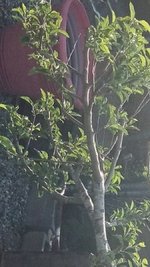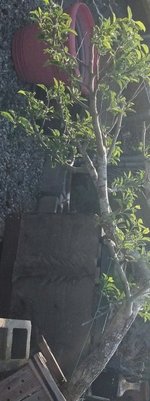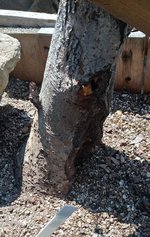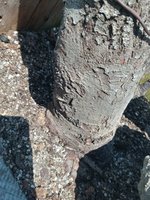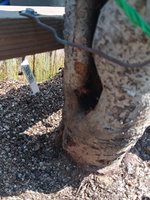RosePastry
Yamadori
A penny for your design thoughts anyone.
My mom has donated huge fruit trees to me. As long as I make them giant bonsai I have free reign to do whatever.
This apple has decided it wants to live and grow up to be a bonsai. The green and white tag was buried with it from bur-something but it was two messed up to identify any information other than the fact that it is fruiting and likes full sun.
It was ground grown for years as part of my mothers fruit tree collection with a tractor essentially root pruning it until it rolled out of the soil a season or so ago (my gramps is starting to get dimensia or just doesn't want to remember what "do not" means). I usually deal with pines so I let it rest with my collected evergreens in the same manner I collect them.
Fertilizing with organic liquid/Watering when the soils is dry and fine misting (with added systemic and chemical fertilizer) every 4ish hours for 3 months before dampening off for rainy season.
It has started to explode with back budding everywhere and the box is now really heavy with a brick and the shade house for size. I have not repotted it or edited it in any way since collection.
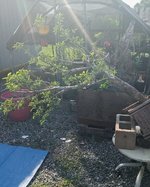
Picture of a crappy old inspirational image I had from my nokia phone forever ago. I think the branching could match pretty well.... If you don't look to close.
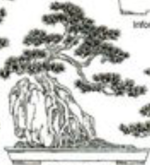
My mom has donated huge fruit trees to me. As long as I make them giant bonsai I have free reign to do whatever.
This apple has decided it wants to live and grow up to be a bonsai. The green and white tag was buried with it from bur-something but it was two messed up to identify any information other than the fact that it is fruiting and likes full sun.
It was ground grown for years as part of my mothers fruit tree collection with a tractor essentially root pruning it until it rolled out of the soil a season or so ago (my gramps is starting to get dimensia or just doesn't want to remember what "do not" means). I usually deal with pines so I let it rest with my collected evergreens in the same manner I collect them.
Fertilizing with organic liquid/Watering when the soils is dry and fine misting (with added systemic and chemical fertilizer) every 4ish hours for 3 months before dampening off for rainy season.
It has started to explode with back budding everywhere and the box is now really heavy with a brick and the shade house for size. I have not repotted it or edited it in any way since collection.

Picture of a crappy old inspirational image I had from my nokia phone forever ago. I think the branching could match pretty well.... If you don't look to close.


